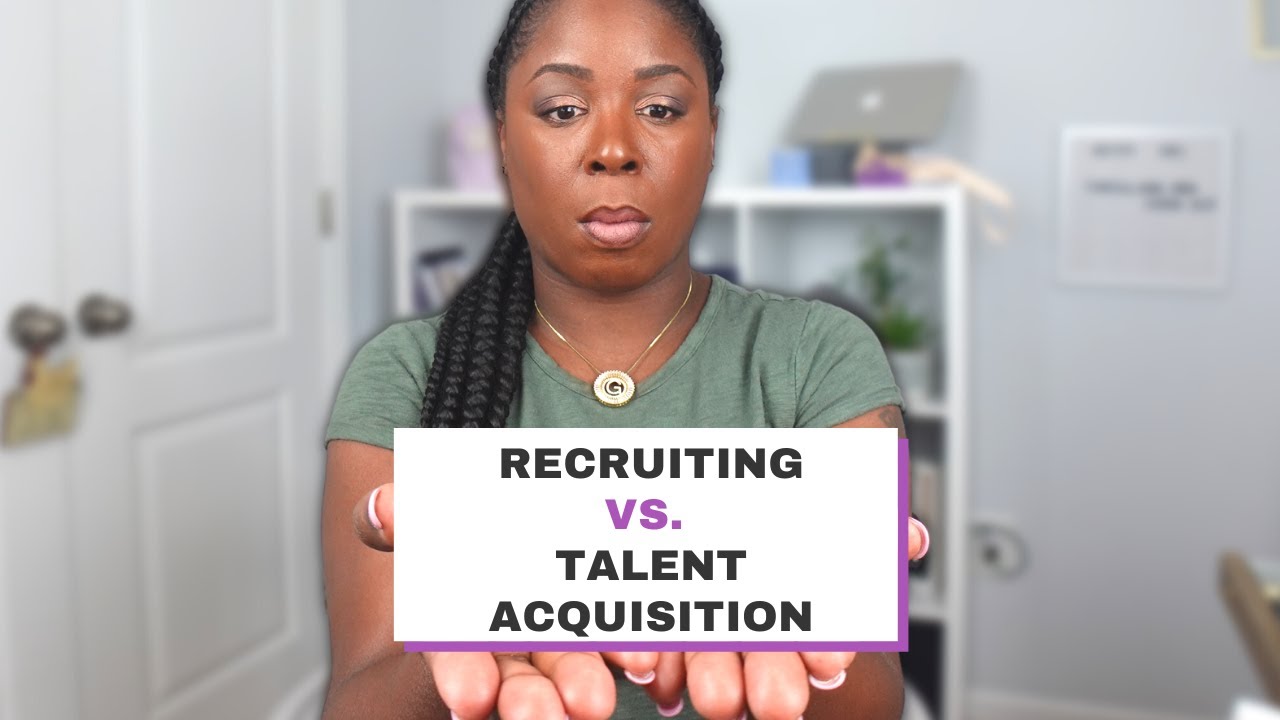![Talent Acquisition Explained [2025]](https://www.moneymaker-magazine.com/wp-content/cache/flying-press/7eee71f7c981c5a09bb022711fec86c0.jpg)
Understanding Talent Acquisition in 2026: A Paradigm Shift
In the rapidly evolving job market of 2026, talent acquisition has become more than just filling job vacancies—it’s about attracting, evaluating, and retaining the right talent. Nowadays, companies are harnessing technology and embracing shifting workplace dynamics to supercharge their hiring processes. One major trend influencing talent acquisition is the emphasis on diversity, equity, and inclusion (DEI). Organizations are actively changing their recruitment strategies to ensure they build diverse teams. For instance, several firms are now increasingly engaging in data-driven recruitment methods, looking beyond mere resumes to assess candidate potential.
Technology, particularly artificial intelligence (AI), has dramatically reshaped talent acquisition. Companies that have been quick to embrace these innovations often find themselves ahead of the competition. For example, AI can efficiently sift through numerous applications, assessing qualifications and fit, while simultaneously reducing unconscious bias. As a result, talent acquisition is no longer a guessing game but a calculated procedure backed by data—an approach that can be a game-changer in sectors ranging from technology to healthcare.
Moreover, creating a strong employer brand has emerged as a crucial aspect of attracting quality talent. With candidates more selective than ever, showcasing an organization’s unique culture and values is essential. In today’s market, firms that promote a positive work environment enjoy greater visibility and desirability. As the lines between work and personal life continue to blur, being authentic about the employee experience is vital. Companies must not just talk the talk but walk the walk when it comes to workplace culture.

Top 7 Talent Acquisition Strategies to Elevate Your Hiring Game

1. Embrace AI-Driven Recruitment Tools
AI is utterly transforming how companies approach recruitment. Take Unilever, for instance; their AI-powered hiring process has significantly streamlined selection, particularly for roles like software engineer jobs. Instead of relying solely on traditional evaluations, AI apps help foster a more diverse applicants list by concentrating on candidates’ potential and cultural fit rather than demographics. This strategy not only enhances efficiency but also broadens the pool of talent.
Furthermore, organizations implementing AI can pinpoint the characteristics of successful employees, guiding future recruitment efforts. Adopting such advanced systems will be crucial for companies aiming to attract top talent in competitive fields.
2. Leverage Data Analytics for Better Decision Making
Harnessing data analytics can take your hiring process to the next level. Firms like IBM utilize analytics to evaluate recruitment effectiveness, providing an insight-rich approach that adjusts strategies in real-time. This means organizations can analyze various metrics—everything from candidate sourcing rates to final hiring timelines—leading to better-performing job listings tailored to attract ideal candidates.
Data allows companies to optimize their talent acquisition tactics by identifying which recruitment channels deliver the best talent. With these insights, organizations can focus their resources more effectively, improving their chances to attract candidates with the desired skills, attitudes, and motivations.
3. Enhance Employer Branding
Creating a strong employer brand goes a long way in attracting the right talent. Google has mastered this art by showcasing their inclusive corporate culture, balancing employee satisfaction with innovation. Ads, content, and social media strategies paint a vivid picture of what it’s like to work there.
To foster a connected community, companies should consistently promote their values and demonstrate commitment to employee growth. This is particularly essential when hiring for roles like sales associates, where the company’s reputation can significantly influence candidate interest.
4. Create Engaging Job Descriptions
Job descriptions serve as the gateway to attracting potential talent. Rather than recycling standard templates, companies should focus on crafting engaging job listings that reflect their unique culture. Delta Airlines, for instance, has excelled in this area with its detailed and compelling flight attendant job description. It goes beyond mere tasks, highlighting employee experiences and opportunities for growth within the organization.
A well-written job description can help candidates envision themselves thriving in the role, thus improving the quality of applications. This shift in approach can also strengthen the company’s branding, making it more appealing to prospective hires.
5. Implement Continuous Candidate Engagement
Keeping candidates engaged is crucial in a competitive job market. Many organizations leverage social media to maintain communication with potential hires. Nike, for example, frequently shares inspiring stories about their employees, showcasing diverse career paths and culture.
Active engagement fosters a sense of community, which is vital for attracting talent across various sectors, even for more niche positions like interior designers. The goal is to ensure that potential candidates feel valued and connected to the company’s mission even before they apply.
6. Focus on the Candidate Experience
An effective hiring process should prioritize candidate experience at every stage. Companies like HubSpot have implemented feedback loops that allow candidates to share their impressions of the hiring process. This direct insight helps firms refine their approaches, ultimately attracting top talent.
An engaging and transparent hiring experience not only makes potential hires feel appreciated but can also lead to positive word-of-mouth recommendations, further enhancing a company’s reputation in a crowded marketplace.
7. Prioritize Diversity & Inclusion
Companies today recognize the importance of diverse workspaces. Microsoft, for instance, has undertaken initiatives aimed at hiring individuals from underrepresented backgrounds, fostering innovation alongside an enhanced corporate image. Prioritizing diversity is pivotal not just for reputation but also for workplace creativity and problem-solving, especially in fields with salary discrepancies like the psychiatrist salary landscape.
Through such programs, companies can create more equitable opportunities, enhancing their appeal to job seekers who prioritize inclusiveness.

Innovative Wrap-Up: The Future of Talent Acquisition
As we sail through 2026, the world of talent acquisition is poised to keep evolving. Technology, workforce expectations, and inclusivity demand adaptation at every level. Companies that leverage innovative strategies—from AI recruitment tools to engaging job descriptions and a focus on candidate experience—will not only nab high-quality talent but will also enhance their overall brand reputation.
By concentrating efforts on these trends, organizations can create a hiring landscape that genuinely resonates with today’s top candidates. Staying ahead of the curve ensures that companies are not just filling positions but building dynamic teams that can thrive in the future of work. Looking ahead, being adaptable and embracing change will pave the way for sustainable success in talent acquisition.

Talent Acquisition: Fun Trivia and Interesting Facts
The Evolution of Talent Acquisition
Did you know that talent acquisition has evolved dramatically over the years? Once upon a time, hiring was a simple process, focusing solely on the résumé in front of you. Now, companies often employ innovative technologies to enhance their strategies. For instance, using a hiring technique similar to the engaging dynamics of the globe game can help identify the right candidates by assessing their skills in real-world scenarios. Imagine assessing talent while having fun, making the process more enjoyable for everyone involved!
The Importance of Cultural Fit
Finding a good cultural fit is as crucial as finding the right skillset. Companies that prioritize cultural alignment often witness a 30% increase in employee satisfaction. Consider how sports teams like the Minnesota Twins and Pittsburgh Pirates weigh player stats before making pivotal decisions. Similarly, during talent acquisition, businesses analyze various factors to gauge compatibility with their organizational culture. It’s all about being in tune, like listening to Hank Williams to get the right vibe for a gathering!
The Future of Hiring
Looking ahead, talent acquisition trends point toward a heavier reliance on data. Just as Tim Sweeney has pushed boundaries in the gaming industry, data analytics is revolutionizing how companies hire. For instance, using targeted metrics can drastically reduce hiring time, mirroring how fans analyze player stats or even take a leisurely trip to check out the closest Pottery Barn near me. Candidates searching for jobs today expect engaging and personalized experiences—similar to how Daisy Bachelor captures audiences with her unique storytelling style. This shift emphasizes that talent acquisition isn’t just about filling roles but creating authentic connections with potential hires.
In a nutshell, the ways we approach talent acquisition are changing fast. By focusing on fit, utilizing data, and incorporating fun elements, companies can smartly navigate this thrilling hiring landscape. Who knew that the future of talent acquisition could be as intriguing as pondering whether or not Jews believe in Jesus? With the right knowledge and approach, businesses can unlock the future of hiring successfully!






















